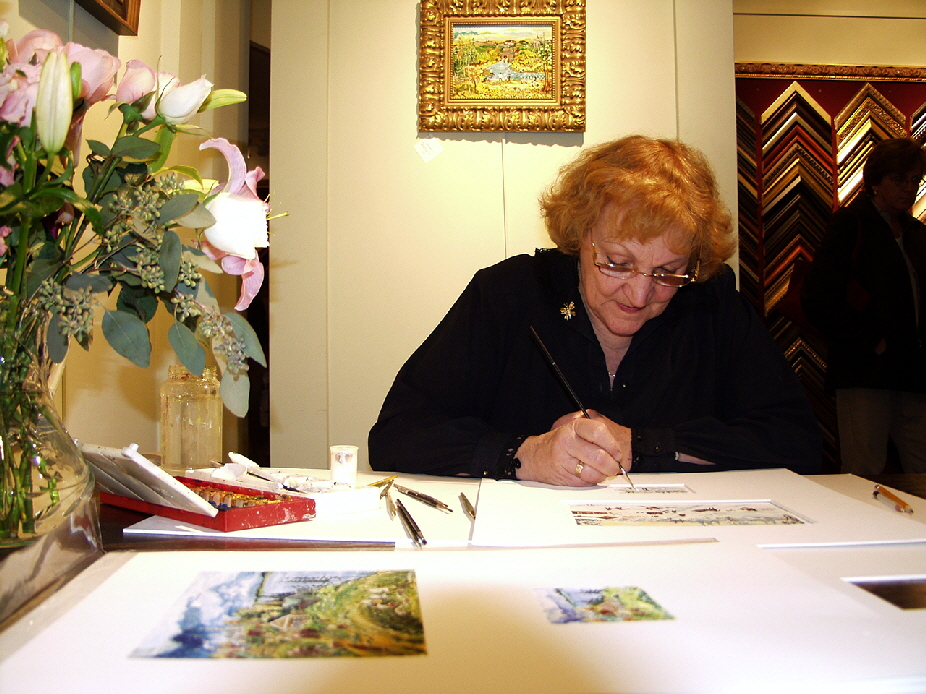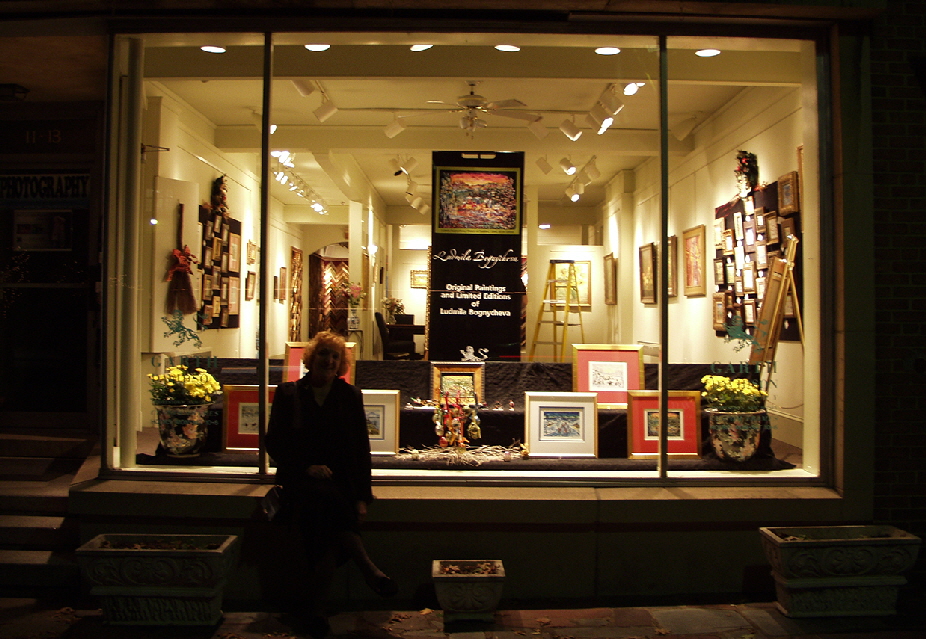Ludmila Bognycheva was born in St. Petersburg, Russia. It had been built by a decree of Peter the Great who brought the splendor of the French Baroque to the marshes of the Neva River and built a city of canals and palaces that was compared to Venice, Italy. He brought the finest craftsmen of France and Europe to his court and had them teach the Russians how to build the kinds of furniture that graced Versailles and the chateaux of France. It became a center of learning as well as a seat of government. Ludmila’s great ancestors were among the people honored in a painting which hangs in the State Russian Museum today, created in 19th century. Her grandmother owned several stores in a gallery that was located in the best neighborhood of St. Petersburg, and her grand-grandfather was a hall servant to the Czar, so that when the servants were all brought along on summer vacations, her grandmother played in the country with the Czar’s children. These memories were whispered in the family and passed down from mother to daughter, so that when Ludmila, as a five year old living in Leningrad heard about her family, she could only imagine the lives that they lived in local palaces that were now state owned buildings and museums for the people.
Though her grandmother was repressed and made to suffer through prisons for basically the crime of having been born into a prosperous family under the Czar, young Ludmila was kept hidden in the city during the harrowing siege of the Germans which lasted for 900 days, and during which all the children were searched for and taken out to the country. Unfortunately, many of these children saved from the daily bombardment were starved due to a lack of food, Ludmila’s mother took personal responsibility and considerable risk to hide her daughter inside the city. Although she was very frightened and knew that she might not see her mother at the end of day, she managed to keep in her imagination through all the years of war an infant memory, a dream that there had once upon a time been a happiness which she would like to grow up to see one day.
Ludmila’s mother lived a few years after the war, until she was 12 years old. She lived with her father, who had served as a colonel in the army during the war, but retained his humanity and liked to draw little pictures. Ludmila studied science and mathematics at in Leningrad’s state-run University, attaining high degrees and having her papers published. But she had it in her genes to want to make something useful and pretty with her hands. At first she made evening and bridal dresses and silk flowers for an atelier and later for The Fashion House. When Katya was beginning to show her talent as a painter, Ludmila supported her daughter and allowed her to attend Stieglitz Academy of Fine Art, and to travel to European capitals in the summer to see different people and to visit their museums. Finally the temptation to paint became too strong to resist and she began to share the colors and the left over art materials of her daughter and to paint miniature scenes on wooden eggs, and eventually make paintings on small bits of canvas and wood. Her scenes were of an old Russia which only lived in the memories of people who had heard stories. Similar to Breughal, similar to Currier & Ives, similar to Michel Delacroix and his scenes of gaslight Paris, Ludmila painted naïve pictures of a Russian countryside where the people were happy and danced. What is striking is the beautiful couture, the variety and the bright colors of their costumes, as if what this survivor of one of histories worst epochs felt it was important to share with posterity was her fashion sense, her sense of humanity, her deep knowledge of Russian history, art and literature and the sharp longing to make a happy ending out of so much suffering and pain.
Copyright © 2022 Ludmila Bognycheva. All rights reserved.
LUDMILA BOGNYCHEVA


